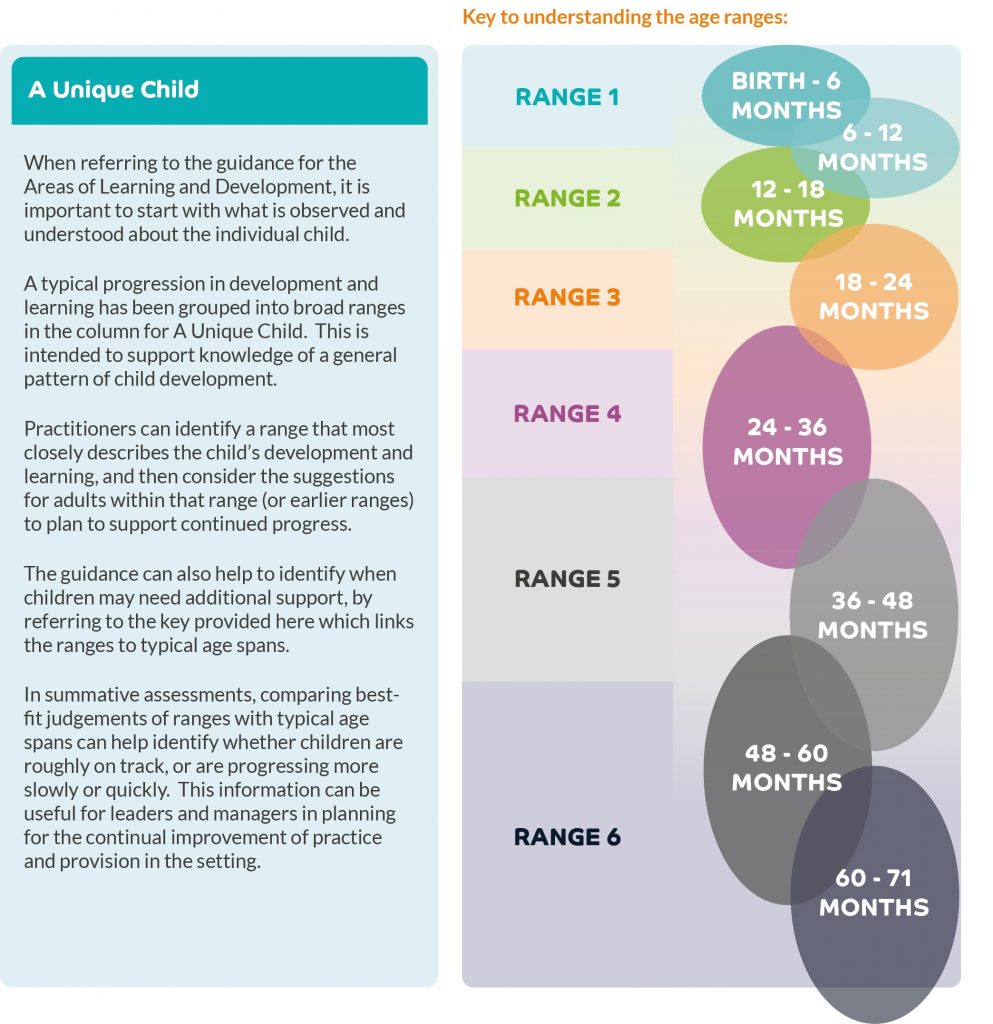The Learning and Development guidance can support understanding of development and learning and the adult’s contribution to the process, but this should be seen as a set of possibilities and not a prescription for either children or adults.
For children
Overall, children will work their individual way from the development and learning typical of babies onward to what older children know, can do, and understand. The grids illustrate samples of what children may do along that journey. While these present some examples, children will do countless things that do not appear in the grids but are equally valuable for their learning. And as each child winds their individual path through the different areas, they will not necessarily show signs of each of the descriptors, nor in the same order presented.
Learning does not move forward in a straight, predictable and linear way. It can stall or even backtrack in one area, while strides and bursts are made in another area. Development should not be expected to be even across all areas, and the balance is likely to shift from one time to another.
The guidance should not be used as a checklist to steer each unique child through a prescribed path with required “next steps”. Rather, it should be a support to help adults to recognise and interpret what a child is showing at the present moment, give the child time to rehearse those skills, be ready to help enrich their experience and deepen and extend their learning.
For adults
Examples of what adults might do or provide should be seen as suggestions or prompts for thinking, suggesting “next steps” adults might take to support children’s development and learning. Adults should use their creative and critical thinking to develop their own ideas, decide what to try, and evaluate its effectiveness. Whether using the grids to reflect on suggestions for moment-to-moment interactions, resourcing and organising the environment, offering opportunities or planning specific activities, practitioners who know children well will adapt and invent the most appropriate ways to support and extend their learning.
Many examples of how adults might support children in earlier ranges are equally applicable to later ranges, and practitioners are encouraged to keep incorporating these in their practice.
Teaching should not be taken to imply a “top down” or formal way of working. It is a broad term that covers the many different ways in which adults help young children learn. It includes their interactions with children during planned and child-initiated play and activities: communicating and modelling language; showing, explaining, demonstrating, exploring ideas; encouraging, questioning, recalling; providing a narrative for what they are doing; facilitating and setting challenges. It takes account of the equipment adults provide and the attention given to the physical environment, as well as the structure and routines of the day that establish expectations. Integral to teaching is how practitioners assess what children know, understand and can do, as well as taking account of their interests and dispositions to learn (characteristics of effective learning), and how practitioners use this information to plan children’s next steps in learning and monitor their progress.
Ofsted Early Years Inspection Handbook

Children develop and learn at their own rates, and in their own ways. The guidance on possible development trajectories should not be taken as necessary steps, nor assumed to be in a particular order, for individual children. The guidance should not be used as a checklist. The age links overlap Ranges because these are not fixed age boundaries but suggest a typical range of development.
Previous page: Holistic development and learning | Next page: The Characteristics of Effective Learning
